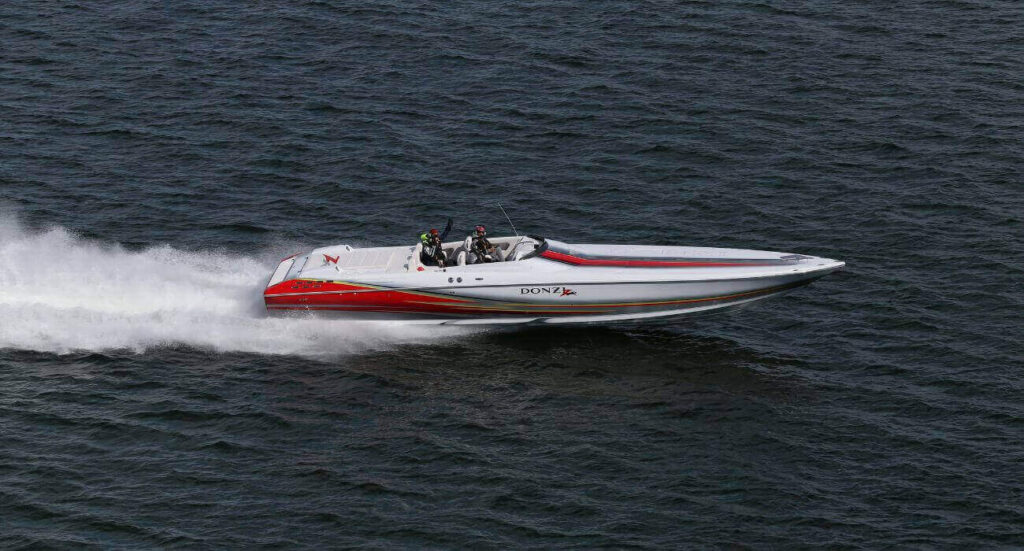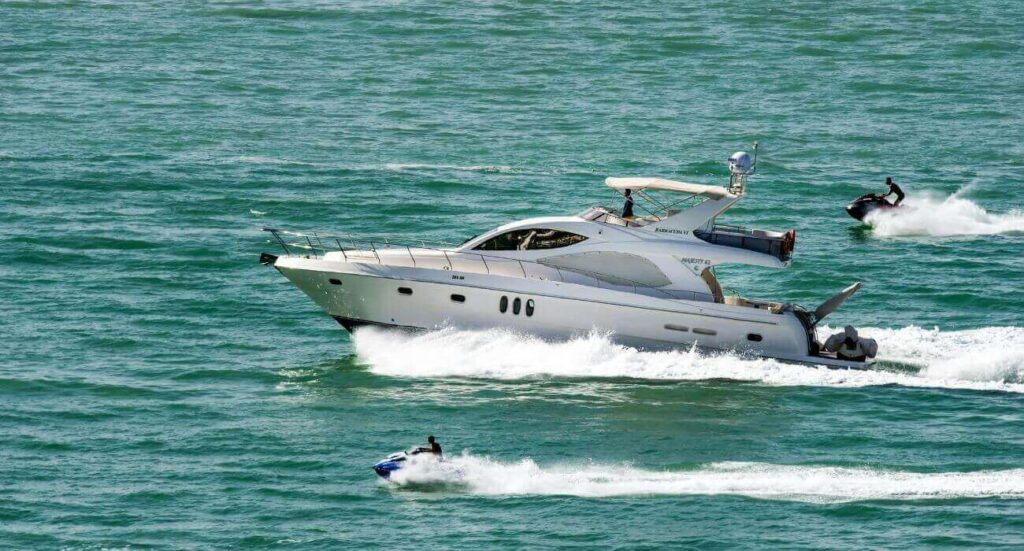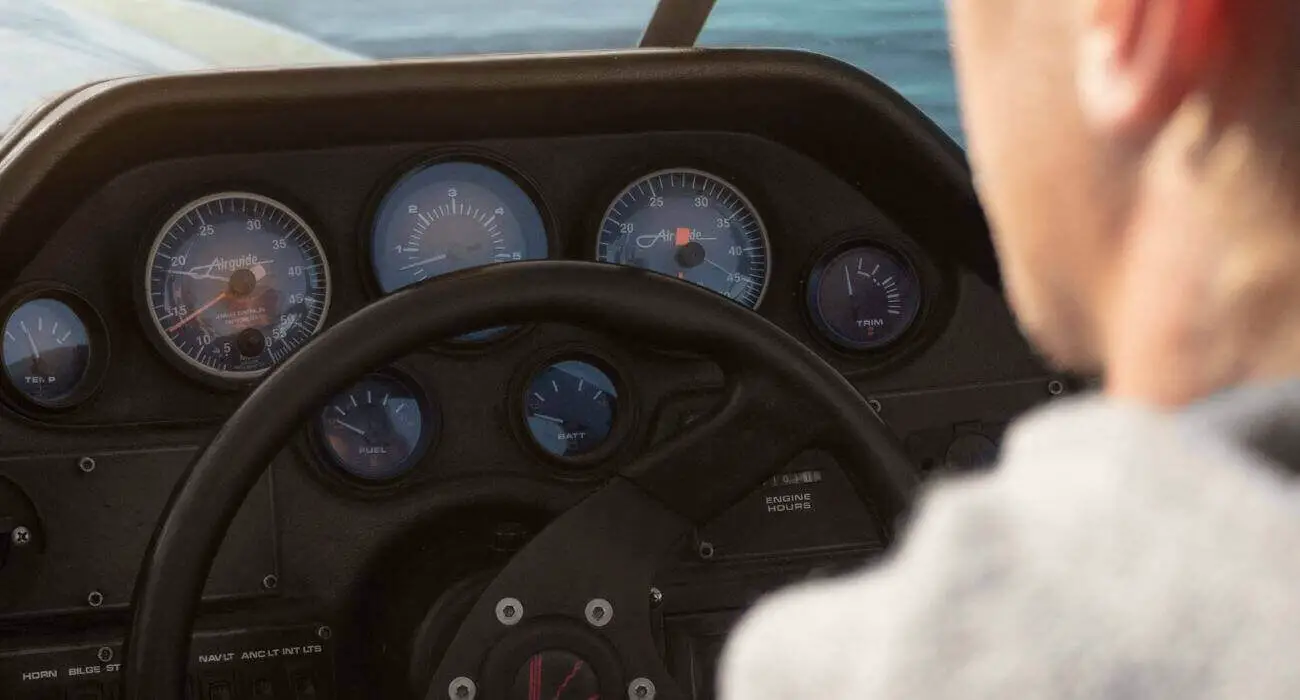As an Amazon Associate, I earn from qualifying purchases
A boat speedometer works by measuring the boat’s speed through water using a pitot tube or paddle wheel. These traditional speedometers rely on the movement of water to estimate the boat’s speed.
Introduction To Boat Speedometers

Boat speedometers measure a boat’s speed by using either a pitot tube or an electric paddle wheel. The pitot tube uses water to compress air, which is then measured and converted to boat speed. The electric paddle wheel speed sensor measures the force of passing water to determine speed.
These methods provide an estimate of the boat’s speed, but digital speedometers are more accurate as they are not affected by moving currents.
A boat speedometer is an essential instrument used to measure the speed of a boat in knots or miles per hour (mph). It provides valuable information to the boat operator, allowing them to monitor their speed, improve fuel efficiency, and ensure safe navigation. In this section, we will explore the purpose of a boat speedometer, different types available, and some common issues that boat owners may encounter.
The Purpose Of A Boat Speedometer
A boat speedometer serves the essential purpose of providing real-time information about the speed at which a boat is traveling. It helps boat operators maintain a steady speed, adhere to speed limits, and navigate safely. By providing accurate speed readings, it allows the boat operator to make informed decisions, such as adjusting the throttle, avoiding hazards, or optimizing fuel consumption.
Types Of Boat Speedometers
Boat speedometers can be categorized into two main types: mechanical and electronic.
| Speedometer Type | Description |
|---|---|
| Mechanical Speedometer | A mechanical speedometer typically utilizes a pitot tube or paddle wheel to measure boat speed. A pitot tube uses water to compress air inside a tube, and the pressure is measured and converted to boat speed. On the other hand, a paddle wheel speedometer works by measuring the force of passing water that turns a paddle wheel. |
| Electronic Speedometer | An electronic speedometer uses advanced technology, such as GPS or sonar, to measure boat speed accurately. This type of speedometer is not affected by moving currents and provides more precise readings than mechanical speedometers. |
Common Issues With Boat Speedometers
While boat speedometers are reliable instruments, they can encounter certain issues that may affect their accuracy or functionality. Here are some common issues boat owners may face:
- Clogged or damaged pitot tubes/paddle wheels: Debris or damage to the pitot tube or paddle wheel can obstruct the flow of water, leading to inaccurate readings.
- Faulty connections or wiring: Loose or faulty connections can disrupt the signal transmission between the speedometer and the boat’s sensors, resulting in inconsistent or no speed readings.
- Interference from other electronics: Nearby electronic devices or wiring can interfere with the speedometer’s signal, causing erratic readings or no readings at all.
- Calibration issues: Speedometers may require occasional calibration to maintain accuracy. Improper calibration can lead to inaccurate readings.
If you encounter any of these issues, it is recommended to consult a professional boat technician to diagnose and resolve the problem.
How Traditional Boat Speedometers Work

Traditional boat speedometers use different mechanisms to measure the speed of a boat. In this section, we will explore three common types of traditional boat speedometers: pitot tube speedometers, paddle wheel speedometers, and their accuracy limitations.
Pitot Tube Speedometers
Pitot tube speedometers are one of the most common types of speedometers used in boats. They work based on the principle of fluid dynamics, specifically utilizing Bernoulli’s principle. A pitot tube is mounted on the bottom of the boat, and it has two channels: one receives water flows and the other measures air pressure.
The water flows into the tube while the boat is moving, causing the air pressure in the other channel to increase. This increase in pressure is directly proportional to the speed of the boat. The speedometer then displays the boat’s speed based on the measured air pressure. Pitot tube speedometers are simple and reliable, making them popular amongst boat owners.
Paddle Wheel Speedometers
Paddle wheel speedometers, as the name suggests, use a paddle wheel to measure the speed of a boat. These speedometers have a wheel with multiple paddles that are submerged in water when the boat is in motion. The flow of water causes the wheel to rotate, and the rotational speed is recorded by the speedometer.
The speedometer then converts the rotational speed into the boat’s speed and displays it to the user. Paddle wheel speedometers are commonly used in smaller boats due to their simplicity and ease of installation. However, they can be prone to inaccuracies if the water conditions are turbulent or if there is debris in the water that may hinder the wheel’s rotation.
Accuracy Limitations Of Traditional Speedometers
While traditional boat speedometers like pitot tube and paddle wheel speedometers are widely used, they do have certain limitations when it comes to accuracy. The primary limitation is that these speedometers are affected by external factors such as currents and turbulence in the water.
Boat speedometers that rely on pitot tubes can be influenced by the boat’s angle of attack and the pressure changes caused by moving currents. Similarly, paddle wheel speedometers can provide inaccurate readings if there are turbulent waters or if the wheel gets obstructed by debris.
It’s important for boat owners to be aware of these limitations and use traditional speedometers as estimates rather than relying solely on them for precise speed measurements. To overcome these accuracy limitations, boat owners can consider using boat digital speedometers, which are not affected by external factors like moving currents and provide more accurate readings.
Digital Boat Speedometers And Gps

Boat speedometers work by measuring the speed of the boat through various methods such as using a pitot tube or paddle wheel. Traditional speedometers are not accurate as they are affected by currents, while digital speedometers provide more accurate readings as they are not affected by moving water.
In the world of boating, having an accurate and reliable speedometer is essential for a smooth and enjoyable experience. While traditional speedometers have served boaters well for years, digital speedometers and GPS technology have taken accuracy and precision to a whole new level. In this section, we will explore the ins and outs of digital boat speedometers and how they utilize GPS to provide accurate speed readings. Let’s dive in!
Introduction To Digital Speedometers
Digital boat speedometers have revolutionized the way boaters monitor their speed on the water. Unlike traditional speedometers that rely on pitot tubes or paddle wheels, digital speedometers integrate advanced electronics to measure boat speed accurately. These speedometers utilize sensors that detect the movement of the boat and convert it into speed readings displayed on a digital screen.
The convenience of digital speedometers lies in their ease of use and readability. With a clear and bright display, boaters can easily monitor their speed even in varying light conditions. Additionally, digital speedometers often offer customizable settings, allowing boaters to select their preferred units of measurement, such as miles per hour (mph) or knots.
Advantages Of Digital Speedometers
Digital boat speedometers offer several advantages over traditional speedometers. Here are a few notable benefits:
- Accuracy: Digital speedometers provide highly accurate speed readings, thanks to their electronic sensors. These sensors are not affected by moving currents or other external factors that may impact traditional speedometers.
- Real-time updates: Digital speedometers provide real-time speed updates, allowing boaters to adjust their throttle and navigate safely. Traditional speedometers often have a slight delay in speed readings due to mechanical limitations.
- Additional features: Many digital speedometers come equipped with additional features that enhance the boating experience. These features may include trip distance tracking, average speed calculation, and even integrated GPS functionality.
Gps Speedometers And Their Accuracy
GPS technology has further improved the accuracy and reliability of boat speedometers. GPS speedometers utilize signals from a network of satellites to calculate boat speed based on precise location data. These speedometers eliminate the need for physical sensors and provide highly accurate speed readings regardless of currents or other external factors.
The accuracy of GPS speedometers is not only limited to speed readings but also extends to other functionalities such as navigation and position tracking. Boaters can rely on GPS speedometers for accurate positioning and speed information, making it easier to navigate unfamiliar waters and avoid potential hazards.
It’s important to note that GPS speedometers may require an initial calibration process to ensure optimal accuracy. This calibration involves inputting the boat’s specifications and can be done through the speedometer’s user interface.
In conclusion, digital boat speedometers and GPS technology have significantly enhanced speed monitoring on the water. These advanced speedometers provide accurate and real-time speed readings, offering boaters greater convenience and safety. Whether you’re a seasoned boater or just starting your boating journey, investing in a digital speedometer with GPS functionality is a wise choice that will enhance your overall boating experience.
Frequently Asked Questions For How Does A Boat Speedometer Work
How Accurate Are Boat Speedometers?
Traditional boat speedometers that use a pitot tube or paddle wheel are not accurate due to moving currents. They provide only an estimate of boat speed. Digital speedometers are more accurate as they are not affected by currents.
How Do They Measure Speed On A Boat?
Boat speed is measured using a variety of methods. Traditional speedometers use a pitot tube or paddle wheel, but they are not very accurate as they are affected by currents. Digital speedometers are more accurate as they are not affected by currents.
Electric paddle wheel speed sensors and electromagnetic fields are also used to measure boat speed.
How Does Speed Sensor Work On Boat?
The speed sensor on a boat works by measuring the force of passing water, similar to measuring the rotation of tires in a car. It can be a pitot tube or an electric paddle wheel sensor. Pitot tubes use water to compress air in a tube, measuring pressure and converting it to boat speed.
Electric paddle wheel sensors measure the rotation of a wheel turned by passing water. Boat speedometers can also use an electromagnetic field, where the speed is determined by changes in voltage as water passes through the field.
How Does A Pitot Tube On A Boat Work?
A pitot tube on a boat works by using water to compress air inside a tube, measuring the pressure, and converting it to boat speed.
Conclusion
To measure the speed of a boat, a speedometer uses various mechanisms. Traditional speedometers rely on a pitot tube or paddle wheel, but these are affected by current and provide only estimates. On the other hand, digital speedometers are more accurate as they are not influenced by moving currents.
Another type is the electric paddle wheel speed sensor, which determines speed by measuring the force of water on a rotating wheel. Ultimately, choosing the right speedometer for your boat is essential to ensure accurate and reliable readings.
Read More
How to Fix Motorcycle Speedometer: Expert Tips and Tricks
Speedometer Reading Slower Than Actual Speed? Ultimate Guide
How to Reset Speedometer Needle: A Step-by-Step Guide
As an Amazon Associate, I earn from qualifying purchases

